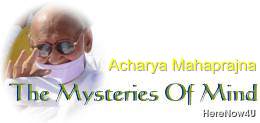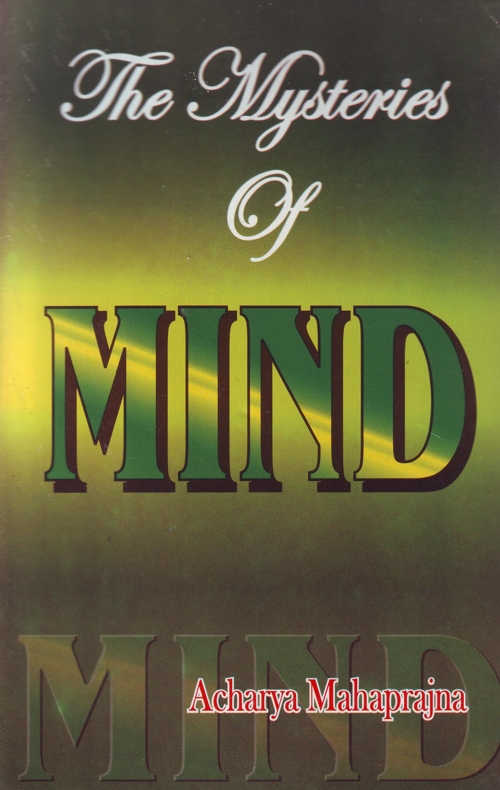
- Three things leave the body when it dies:
- The soul
- the karma body
- the taijasa body
- One of these is formless and the other two have forms.
- The body is continuously changing.
- Life is a chain of succession:
- body from the jiva,
- vlrya (energy) from the body,
- yoga from virya,
- self-negligence from yoga:
- karma bondage from self negligence.
- Two fundamental substances which produce the entire universe:
- Body with Jiva
and - Body without a Jiva.
- Body with Jiva
- Three constituents of the awakening of energy:
- Perceptive meditation on long breathing,
- Perceptive meditation on normal breathing,
- Perceptive meditation on subtle breathing.
- Breath connected with prana (vital force),
- prana connected with subtle prana
and - subtle prana connected with subtle body.
- Breath control, the key to the whole process of perceptive meditation.
- There are several conducting centres in the body.
Concentration on these centres brings about a development of various powers.
Awakening Of Energy-Value And Purpose
Ever since man began to think, he has been thinking about the basic substance of the universe. Records of this thinking for the last five thousand years are available.
Truth is unlimited and the search for it will never end. Let us think of an event, which happened two thousand five hundred years ago. A wise muni (ascetic) named Kesi-kumara paid a visit to King Pradesi. In the course of their conversation the king observed: "Sir, there is no soul. Consciousness does not exist as a substance. The body itself is the soul. The body and the soul are not two different substances. That alone which is directly perceived by the sense-organs is true. We can perceive the body directly. This body itself is the soul. The unconscious alone is real. It is replete with energy. Consciousness is a by-product of a combination of various unconscious elements and it disappears suddenly leaving behind uncon scious elements. Nothing like consciousness exists." Supporting his thesis with an example he further observed: "Take for example a child whose energy has not yet been developed. He cannot mount an arrow on the string of a bow. The selfsame child can shoot an arrow across a long distance when he has grown up and has collected energy in his body. If the body and the soul were distinct from each other and if the child had a soul, he would not take such a long lime to handle a bow. If it had a soul, it would be the selfsame soul when the child grew tip. Therefore the body and the soul are not two distinct entities."
Muni Kesi replied: "I agree with you. There is some truth in what you have said. But I would like to ask one thing. Suppose that the bow is broken and so is the string. Can anyone mount an arrow on such a bow even if he were grown up, strong and clever? If the bow and the string were not broken, any young man can shoot an arrow from them. It is not because the child's soul is different from that of a young man or that the former cannot shoot an arrow and the latter can. Both possess the same soul. However, the weapon which the child wields is a broken weapon and, there fore, it cannot shoot the arrow. The weapon of the young man is in working-order, and, therefore, he can shoot the arrow. The two bows are not the same. That makes the difference and not the soul."
Let us understand the moral of the anecdote. Human life is composed of three elements - the soul, the body and energy. The agamas adopt the analogy of the tridanda (a bundle of three sticks) to explain the same idea. The soul is a long way away from us not physically but metaphorically. It is embedded so deep in us that it is not visible with the physical eye. We are unable to sink into that depth.
Although our life is composed of the soul, the body and energy, we know only that which is gross i.e. the body. We do not know that which is subtle, nor do we try to know it. We do not try because we have never known the soul. You do not know anything about a person you have never met. This holds good about the soul also which we are unable to know because it is too subtle. Acharya Mahaprajna
Acharya Mahaprajna

